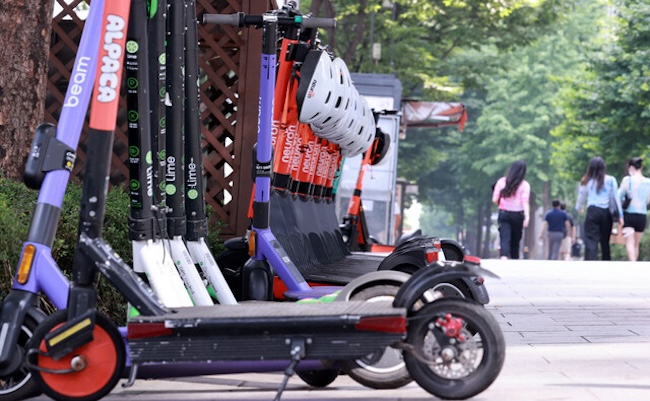
Electric scooters (Image courtesy of Yonhap) SEOUL, Nov. 1 (Korea Bizwire) – In a comprehensive analysis of injury statistics released by South Korea’s Disease Control and Prevention Agency on October 31, data reveals that three-quarters of emergency room patients injured while using personal mobility devices, primarily electric scooters, were not wearing helmets at the time of their accidents. The findings were published in the “Injury Fact Book 2024,” which examines various types of injuries resulting from accidents, disasters, and poisoning, excluding diseases.
The report shows that approximately 2.88 million people sought medical treatment for injuries in 2022, with 1.14 million requiring hospitalization.
In 2023, injury-related deaths reached 28,000, marking a 4.2% increase from the previous year. Hospital admissions saw an even more dramatic rise of 19.
5%. Officials attribute these increases to an increase in outdoor activity following the gradual lifting of COVID-19 restrictions. Emergency room visits across 23 hospitals also rose by 5.
1% in 2023, totaling 203,285 patients. In its first-ever survey focusing on personal mobility devices, conducted from September 2022 to August 2023 across 15 hospitals, the agency documented 1,258 injury cases. Young people aged 15-24 accounted for 40.
4% of these incidents. Electric scooters were involved in the vast majority of cases at 86.3%, while electric bicycles accounted for 10.
2%. Notably, the proportion of riders not wearing a helmet (75%) was 6.7 times higher than those wearing protective headgear (11.
2%). The report also included the agency’s first occupational injury survey, conducted at eight hospitals during the same period. Among 907 work-related injuries, workers aged 55-64 represented the largest group at 30.
7%. Manufacturing and construction sectors accounted for the majority of cases, at 86.3% and 10.
2% respectively. The study found that 13.2% of injured workers had received no safety training in the previous year, and 17.
6% were not wearing protective equipment when their injuries occurred. M. H.
Lee ([email protected]).














